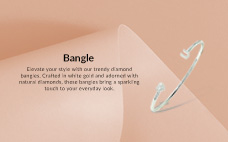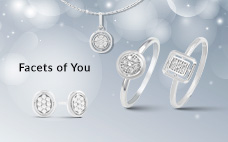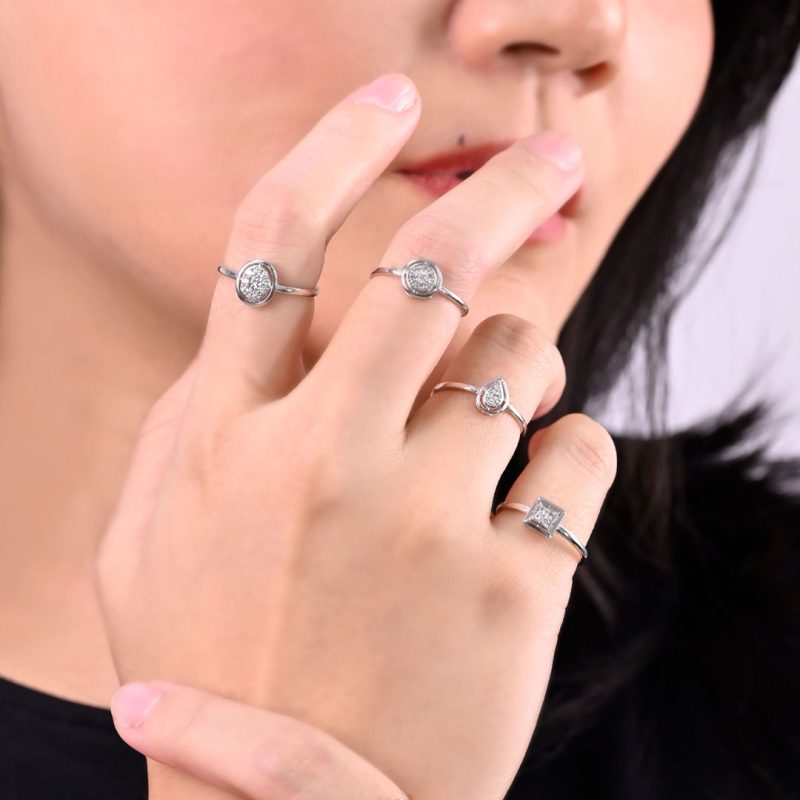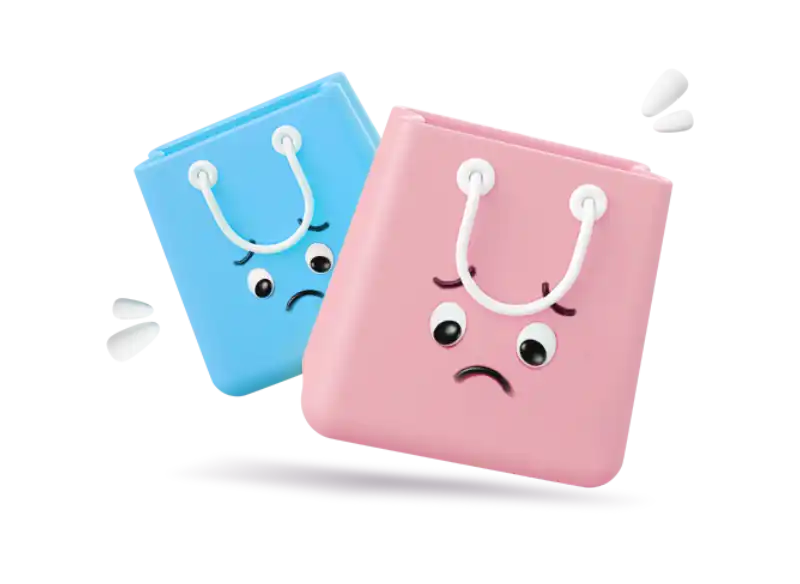Looking to buy diamond jewelry in Malaysia? From understanding the 4Cs to selecting the right jeweler, this comprehensive guide offers everything you need to make a confident, informed decision when purchasing diamond jewelry in Malaysia.
Why Buying Diamond Jewelry Requires Careful Consideration
Purchasing diamond jewelry is not merely a luxury expense—it is often a symbolic and emotional investment, whether for engagements, anniversaries, gifts, or self-reward. However, diamonds can be complex to evaluate without a clear understanding of what determines their value, quality, and suitability for your needs. In Malaysia, where both local and international jewelers offer a wide range of products, being informed helps avoid overpaying or making compromises on quality.
At DiamondTalk, we understand the significance of buying a diamond that will last a lifetime, with quality and craftsmanship you can trust.
The 4Cs of Diamonds: Cut, Clarity, Color, and Carat
The 4Cs—Cut, Clarity, Color, and Carat weight—are globally accepted standards used to assess a diamond’s quality. Understanding them is essential for any buyer.
Cut refers to how well a diamond’s facets interact with light. A well-cut diamond will reflect light internally and externally to create brilliance and sparkle. Ideal or Excellent cuts typically command higher prices due to their superior light performance.
Clarity assesses the presence of internal inclusions or external blemishes. Clarity is graded from Flawless (F) to Included (I). Most diamonds contain minor imperfections, but many are microscopic and do not impact the diamond’s beauty to the naked eye.
Color measures the absence of color in a diamond. The Gemological Institute of America (GIA) grades color from D (colorless) to Z (light yellow or brown). Colorless diamonds are rare and more valuable, but near-colorless grades like G or H often offer excellent value.
Carat refers to the diamond’s weight, not its size. A higher carat weight generally means a more expensive diamond, but other factors like cut quality and shape can also affect perceived size and brilliance.
Choosing the Right Diamond Shape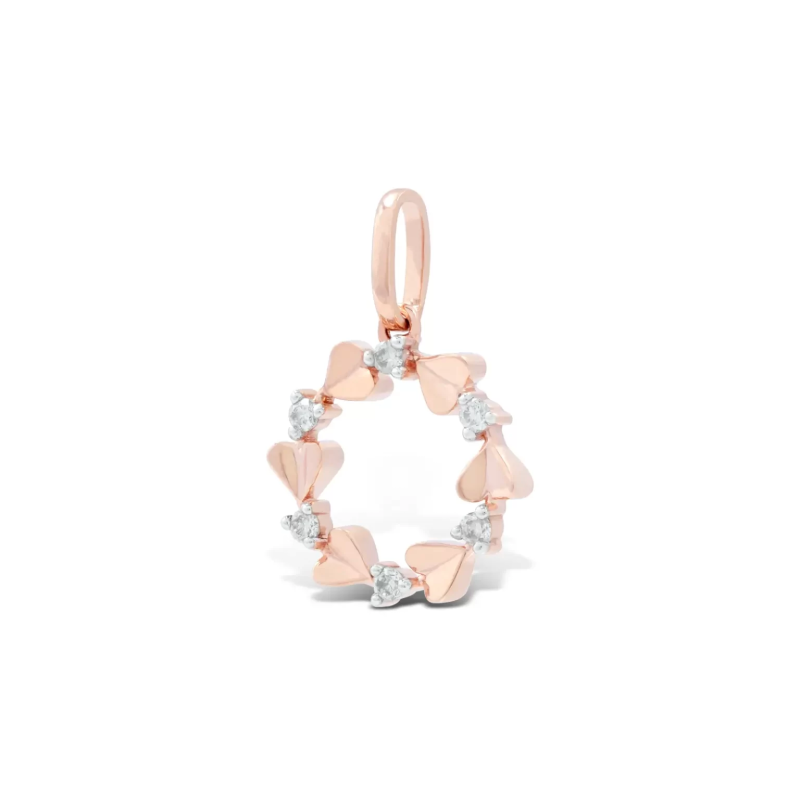
Beyond the 4Cs, diamond shape plays a crucial role in aesthetic appeal. Round brilliant cuts are the most popular due to their exceptional sparkle. However, alternative shapes like princess, cushion, oval, emerald, and pear offer unique styles and may be priced more affordably per carat.
Each shape reflects light differently and suits different ring settings and personal preferences. For example, an emerald cut offers a vintage, understated elegance, while a round cut is timeless and universally flattering.
Certification: Why GIA, HRD, or IGI Reports Matter
Diamond certification is a third-party verification of a diamond’s quality based on the 4Cs and additional attributes. Reputable certifications include those from the GIA (Gemological Institute of America), HRD (Hoge Raad voor Diamant), and IGI (International Gemological Institute).
A certified diamond provides transparency and assurance that you are getting what you paid for. In Malaysia, most trustworthy jewelers will provide GIA-certified diamonds, especially for engagement rings and custom orders.
Avoid purchasing diamonds without proper certification, especially from sources that do not have transparent return or buyback policies.
Metal Choices: Gold, White Gold, or Rose Gold?
The metal you choose plays a significant role in the overall aesthetic, durability, and maintenance of your diamond jewelry. Each option offers a unique visual and functional appeal.
Yellow Gold: Yellow gold is a traditional metal made by combining pure gold with alloy metals like copper and zinc.
It has a rich, warm tone and is a popular choice for classic or vintage-style jewelry. Yellow gold is relatively low-maintenance, resists tarnishing, and is easy to resize, making it a dependable long-term option.
White Gold: White gold is an alloy of gold mixed with white metals such as palladium or nickel, typically coated with rhodium.
This plating gives it a shiny, silver-like appearance that pairs well with colorless diamonds. While elegant and versatile, white gold may require periodic rhodium re-coating to maintain its brilliance over time.
Rose Gold: Rose gold is a gold and copper alloy known for its soft pink hue.
This romantic and modern option has become increasingly popular in recent years, especially for engagement rings. The copper content makes it more durable than yellow or white gold, though it may develop a slightly darker patina with time.
Setting Styles: How Your Diamond is Secured
The setting refers to the way a diamond is mounted onto the jewelry. It not only determines how secure the diamond is, but also influences how much light the stone reflects and how it looks overall.
Prong Setting: A prong setting is a classic style where the diamond is held in place by metal claws or prongs.
This setting maximizes light exposure to the diamond, enhancing brilliance and sparkle. It’s ideal for round and princess-cut stones but requires regular inspection to ensure the prongs remain tight.
Bezel Setting: A bezel setting surrounds the diamond with a thin metal rim.
This design offers a sleek, modern look while providing maximum protection to the stone. It’s a great choice for people with active lifestyles, though it may slightly reduce light reflection compared to prong settings.
Halo Setting: A halo setting features a central diamond encircled by smaller accent diamonds.
This not only adds extra sparkle but also gives the illusion of a larger center stone. Halo settings are popular in engagement rings and can enhance the perceived value of the piece.
Pavé Setting: A pavé setting involves setting small diamonds closely together along the band.
This technique creates a continuous sparkle across the jewelry surface and adds elegance to the overall design. While stunning, pavé settings may require more maintenance, as tiny stones can become loose over time.
Buying Diamond Jewelry in Malaysia: Key Considerations
Malaysia’s diamond jewelry market offers both international luxury brands and reputable local jewelers. Here are some general considerations when buying within the Malaysian context:
- Retail vs Online: While shopping in person offers the benefit of seeing the piece directly, online platforms often provide better prices. If purchasing online, ensure the retailer offers certified diamonds, secure payment, and return policies.
- Cultural Preferences: In Malaysia, diamond jewelry is a popular gift for weddings, engagements, and milestone events. Preferences lean toward colorless or near-colorless diamonds, with classic round cuts being widely favored.
- GST and Pricing Transparency: Jewelry prices in Malaysia are typically GST-inclusive. Always request a full invoice with itemized specifications and certification details.
- Jeweler Reputation: Buy only from licensed jewelers with positive reviews and a physical presence. Always ask for documentation, especially for higher-value items.
How to Set a Realistic Budget
Diamond jewelry comes in a wide price range depending on carat size, cut, clarity, and brand. In general:
- A simple 0.5 carat solitaire ring in 18K white gold may start from RM4,000–RM6,000.
- One-carat certified diamonds can range between RM10,000–RM25,000 depending on quality.
- Bespoke pieces and designer brands can command significantly higher prices.
Set your budget based on what you value most—whether it’s carat size, cut quality, metal type, or brand reputation. Consider prioritizing cut quality over carat weight to maximize visual appeal.
Common Mistakes to Avoid
When purchasing diamond jewelry, especially for the first time, avoid these frequent pitfalls:
- Not comparing certifications: Assuming all diamond certifications are equal can lead to poor value.
- Overpaying for branding: Some luxury brands charge significantly more for similar quality stones.
- Focusing only on carat weight: A large but poorly cut diamond can appear dull.
- Skipping insurance: Always insure high-value jewelry against loss or damage.
A well-researched buyer avoids these mistakes and ends up with a piece that holds long-term value—both sentimental and monetary.
Caring for Your Diamond Jewelry
Proper maintenance helps preserve the brilliance and integrity of your diamond jewelry. Clean your jewelry regularly using mild soap and warm water. Use a soft brush to remove grime, especially in settings and under the diamond.
Avoid exposing your jewelry to harsh chemicals, lotions, or perfumes, which can dull the metal and stone over time. Store pieces in individual fabric-lined boxes to avoid scratching. Regular inspections (once a year) by a professional jeweler are also recommended to check prongs and settings.
Where to Start Your Diamond Jewelry Journey in Malaysia
Buying diamond jewelry in Malaysia is a rewarding experience when approached with the right knowledge. Understanding the 4Cs, selecting certified diamonds, comparing metal options, and choosing a reputable jeweler are all critical steps in the process.
To begin your search with confidence, we recommend exploring diamond jewelry in Malaysia, where you’ll find high-quality, certified selections suitable for every occasion and budget.
Make your next diamond purchase not just a transaction—but a lasting investment in beauty and meaning.


